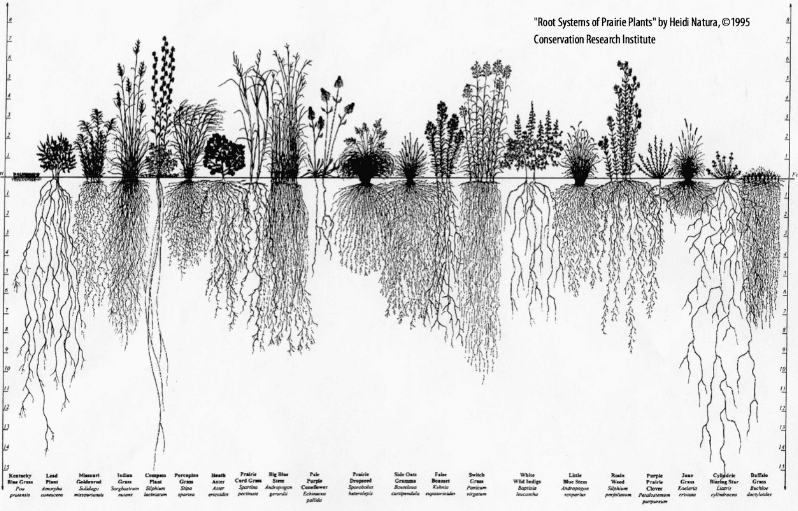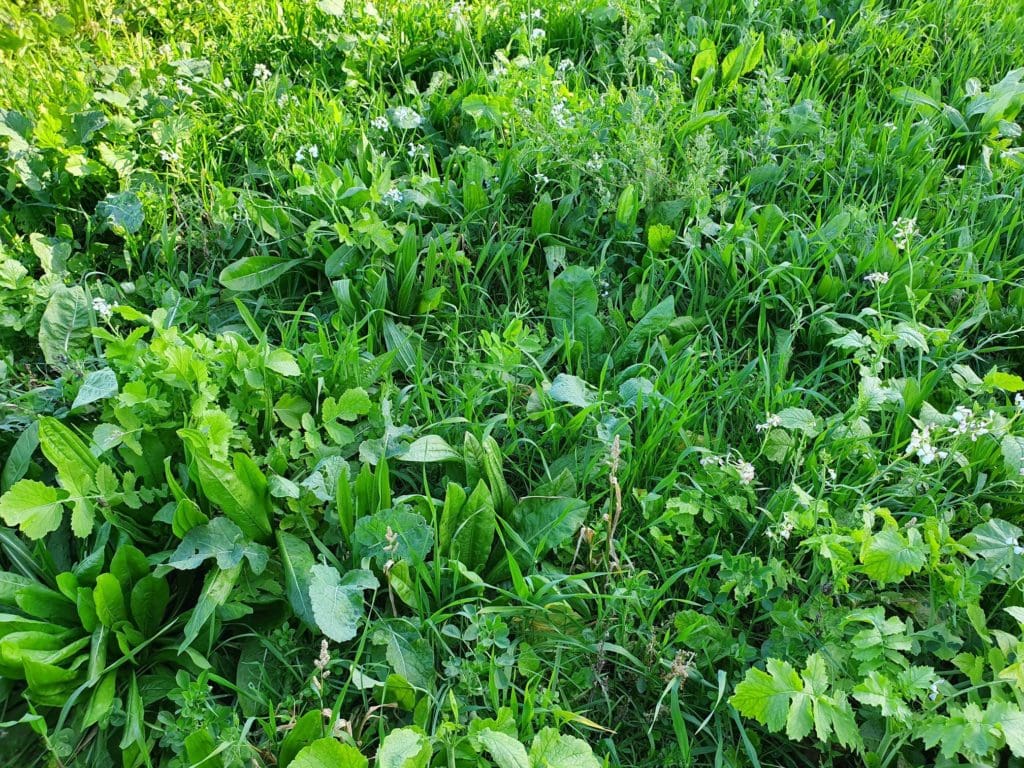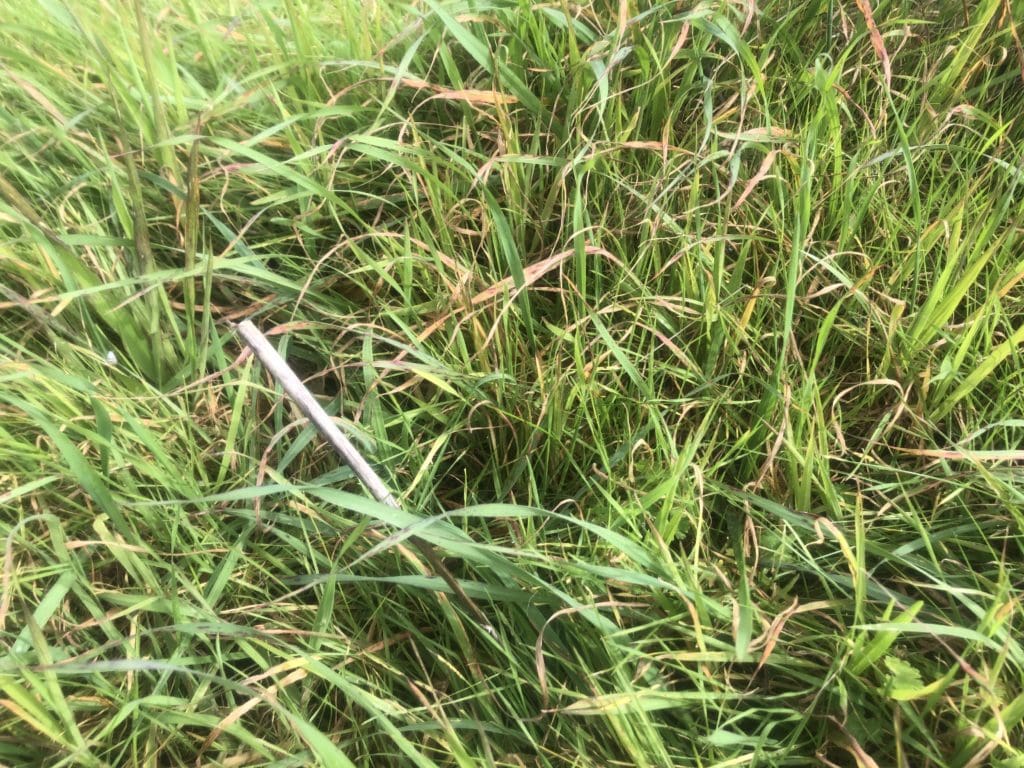List of Plant Families for Enhancing the Plant Associated Soil Microbiome (Jones 2023)

A healthy agricultural system is one that supports all forms of life. All too often, many of the life forms in soil have been considered dispensable. Or more correctly, have not been considered at
all.
In parallel with research into the human gut microbiome, understanding and supporting the
functioning of the soil microbiome is being increasingly recognised as the future for agriculture.
The core microbiome of a plant is encapsulated in the seed. Seeds contain hundreds of species of
bacteria, archaea, fungi and protists. When the seed germinates the microbes multiply and move
into the roots, then into leaves and flowers and eventually back into seeds in readiness for the next
generation. These microbes are called endophytes.
The majority of microbes in the rhizosphere (the soil surrounding plant roots) originate from the
seed, rather than from the soil.
Sadly, many of the microbes important for soil function have gone missing in action. Can we get
them back? Some producers have achieved large improvements in soil health in a relatively short
time. What are these farmers doing differently? They diversify.
The Power of Microbial Diversity
Microbes function best in teams (consortia) representing a wide range of functional traits. The
presence of many different kinds of microbes underpins plant nutrient dynamics, soil structure,
water-holding capacity, crop and pasture productivity, resistance to pests and diseases, carbon
sequestration and landscape function.
The rhizosphere microbiome created by plant roots is distinctly different for each plant family.
Hence the greater the diversity of plant families, the greater the diversity of microbes and the more
robust the soil ecosystem.
An important finding to emerge from the Jena Biodiversity Experiment was that plant diversity
significantly increased root exudation in the entire plant community, supporting greater microbial
biomass, particularly beneficial soil fungi. This in turn resulted in significantly higher levels of soil
carbon and better-structured, deeper soils, with higher nutrient levels and improved water-holding
capacity compared to the same soil with a low diversity of plants.
LEGACY EFFECTS
Plants leave a microbial footprint (legacy) that follow-on plants can tap into. Legacy effects can last
for six months or longer – and are cumulative. It is frequently observed that successive plantings of
multi-species covers and forages improve over time. The legacy effect also explains why summer
cover is so vitally important in seasonal rainfall environments such as experienced in many parts of
Western Australia. Even if your multi-species mix only survives for a short period, it can improve
the soil for the plants that subsequently occupy that space.
Below is a list of some of the plant families and species most commonly used in companion
plantings, multi-species cash and cover crops and diverse forages. The list is for home gardeners,
horticulturalists, crop producers, ranchers and graziers in many different environments around the
world. Hence not everything on this list will be applicable to your situation.
Plant families (in bold) are listed in alphabetical order. A few examples of species of horticultural or
agricultural significance are shown for each family. A minimum of four plant families is required
for effective soil function. Experiment with as many different plant families and species as you can.
EXAMPLES OF PLANT FAMILIES FOR COMPANION PLANTING
Aizoaceae: pigface (Carpobrotus glaucescens)
Amaranthaceae: ptilotus (mulla mulla), saltbush, rhagodia, goosefoot, quinoa, silver beet, sugar
beet, spinach, swiss chard, fat hen / lamb’s quarters (highly nutritious edible ‘weed’).
Amaryllidaceae: onions, chives, garlic etc
Apiaceae: more than 3,000 species including carrot, parsnip, coriander, caraway, cumin, celeriac,
celery, coriander/cilantro, dill, fennel, lovage, angelica, anise, chervil, cicely, parsley. Apiaceae are
great companions in the veggie garden and also under fruit trees.
Asparagaceae: asparagus – a great companion for fruit trees
Asteraceae: the daisies – chicory, sunflower, safflower, lettuce, marigolds, zinnias, cosmos,
cornflowers, calendula and thousands more. Asteraceae is the world’s largest plant family.
Boraginaceae: phacelia, borage, comfrey
Brassicaceae: radish, turnip, kale, camelina, mustard, canola, collard greens, sweet alyssum,
nasturtium etc Brassicas are a large and variable plant family
Convolvulaceae: sweet potatoes – excellent in orchards and vineyards, highly nutritious for
livestock and great for soil restoration
Cucurbitaceae: cucumbers, gourds, melons, squashes, zucchinis and pumpkins
Fabaceae: most of the cool and warm-season legumes are in this family – clovers, peas, faba
beans, vetches, lucerne, biserrula, serradella, birdsfoot trefoil, tagasaste, sunn hemp, lab lab,
sanfoin, fenugreek and many more. Fabaceae is the world’s third largest plant family.
Lamiaceae: mints, basil, sage, thyme, lavender etc
Linaceae: linseed (flax) – widely used in covers and also an excellent non-competitive companion
in the vegetable garden
Malvaceae: okra, cotton, hibiscus
Poaceae: cool-season cereals (eg wheat, oats, barley, rye, triticale etc) and warm-season grasses
(corn, silk sorghum, sorghum-sudan, millet and so on)
Polygonaceae: buckwheat
Portulacaceae: pigweed, purslane (Portulaca oleracea)
EXAMPLES OF PERENNIAL FORBS AND SHRUBS FOR GRAZING & SOIL RESTORATION
Amaranthaceae: ptilotus (mulla mulla), saltbush, bluebush, rhagodia, goosefoot
Apiaceae: sheep’s parsley (Petroselinum sativum), garden parsley (Petroselinum crispum),
celery (Apium graveolens).
Asteraceae: chicory (Cichorium intybus), yarrow ( Achillea millefolium)
Fabaceae: tagasaste, tedera, kennedia, birdsfoot trefoil, lucerne, white clover, red clover, sanfoin
Onagraceae: evening primrose (Oenothera glazioviana)
Plantaginaceae: narrow-leaved plantain (Plantago lanceolata)
Rosaceae: burnet – also known as salad burnet, small burnet or sheep’s burnet.
(Sanguisorba minor)
TREES AND SHRUBS
Remember to also incorporate diversity into shrub and tree layers. Livestock performance is
enhanced when fodder shrubs are planted in diverse mixes with a mid-row of diverse perennial
groundcover. Even if not grazed, shrub and tree layers are important for beneficial insects, spiders
and birds, soil protection and microbial diversity.
WEEDS
Think carefully about any plants you consider ‘weeds’ before rushing out to eradicate them. Are
they helping improve soil microbial diversity, hence improving soil function? In some situations
weeds provide a very important service. Not all weeds are beneficial of course. They may be highly
invasive, allelopathic or poisonous to stock. But in most cases they are there for a reason. Having
a greater diversity of families within your plant community will leave less room for weeds. It is not
unusual for ‘weeds’ to simply disappear once their function has been replaced by other species.
Our Collective Future
The belief that monocultures and intensively managed systems are more profitable than diverse
biologically-based systems does not hold up in practice. Monocultures need to be supported by
high and often increasing levels of inorganic fertiliser, fungicide, insecticide and other chemicals
that inhibit soil biological activity. The result is even greater expenditure on agrichemicals in an
attempt to control the pest, weed, disease and fertility ‘problems’ that ensue.
The effects of agricultural poisons on the wider environment and human health also need to be
considered.
Most (if not all) chemical inputs can be replaced by plant-associated microbial diversity.
When considering an action, first ask “will this increase or decrease soil microbial diversity?”
Remember, we’re all in this boat together … so let’s build a good one!!
Christine Jones, PhD www.amazingcarbon.com




Responses